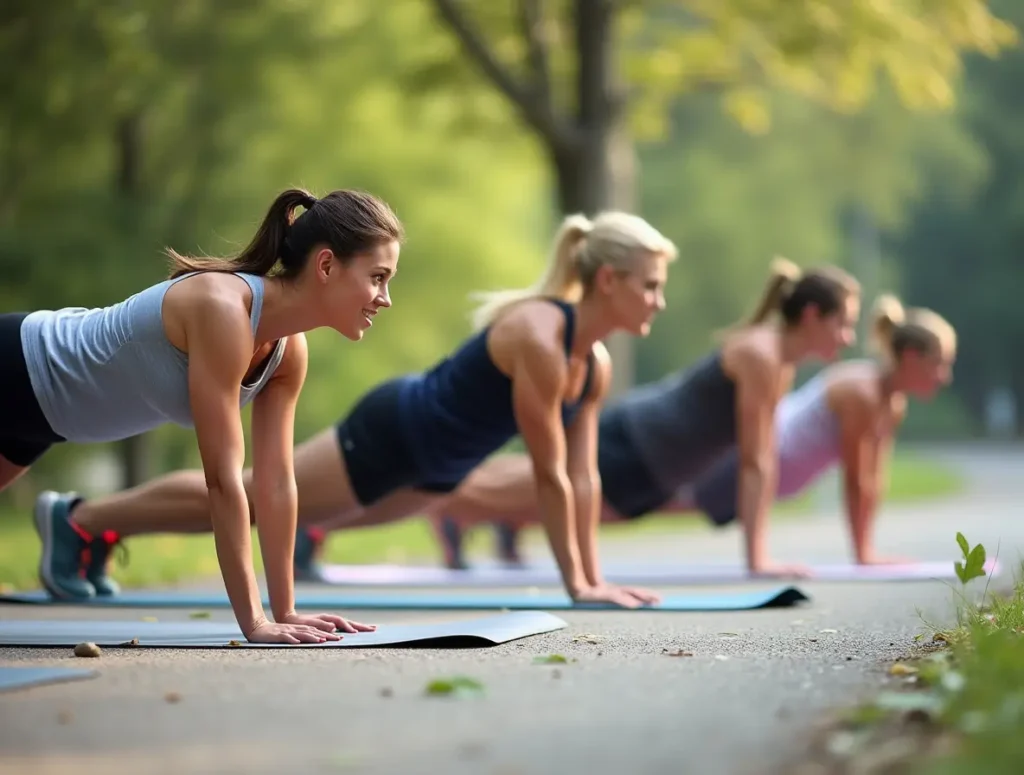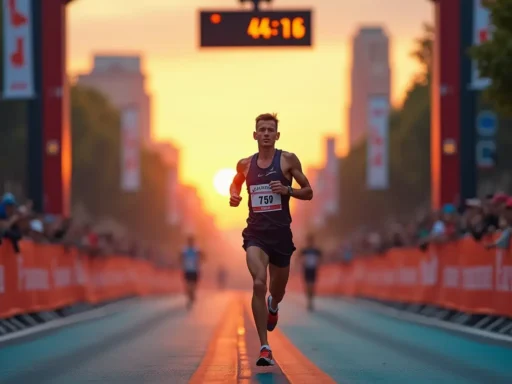What’s the secret to unlocking your full potential in a marathon? The answer lies in mastering your running form through effective running techniques for marathon training. Every runner’s body is unique, and understanding your individualized technique is key to improving your performance and reducing injury risk.
A proper running form starts with alignment—your head, trunk, and legs should work in harmony to create efficient biomechanics. This means maintaining a neutral posture and avoiding unnecessary strain on your neck and joints. Even a slight forward lean can make a big difference in your efficiency and speed.

Our step-by-step guide is designed to help you develop the skills and awareness needed to enhance your training. From body alignment to cadence, we’ll cover specific drills and expert-backed tips to help you refine your technique over time. Whether you’re a seasoned runner or just starting out, this guide will provide the tools you need to optimize your performance and achieve your goals.
By the end of this guide, you’ll be equipped with the knowledge to improve your running economy, reduce energy waste, and maintain consistent pacing. Let’s dive into the essential techniques that will take your training to the next level.
Table of Contents
Mastering Proper Running Form: The Foundation of a Great Run
Proper running form is the cornerstone of efficient and injury-free performance. By aligning your body correctly and maintaining optimal posture, you can enhance your breathing, reduce muscle tension, and improve overall efficiency.
Aligning Your Body for Efficiency
Your body should be stacked in a straight line from head to heel. This alignment starts with your lower leg, followed by your thigh, pelvis, trunk, neck, and head. A neutral posture ensures that no single muscle group is overworked, allowing for efficient energy use and reducing the risk of overuse injuries.
One effective method for self-assessment is to record a video of your run. Pay attention to your posture and stride. If you notice any misalignment, such as overstriding or hunching, make adjustments to restore your natural alignment.
Optimizing Head, Shoulder, and Arm Positioning
Keep your head upright and your gaze directed forward. Avoid tilting your head up or down, as this can disrupt your breathing and posture. Your shoulders should remain relaxed and down, avoiding the common mistake of hunching, which can lead to neck and shoulder strain.
Proper arm positioning is also crucial. Keep your elbows at a 90-degree angle, with your arms swinging forward and backward, not across your body. This stabilizes your upper body and maintains balance. Avoid stiffening your arms, as this can waste energy and disrupt your form.
| Common Mistake | Correction Tip |
|---|---|
| Overstriding | Focus on quick turnover and shorter strides to reduce impact on your joints. |
| Hunching Shoulders | Relax your shoulders and keep them down to maintain proper posture and breathing. |
| Stiff Arm Swing | Keep elbows at 90 degrees and allow arms to swing naturally to conserve energy. |
By incorporating these adjustments and performing regular form checks during your runs, you can ensure long-term improvements in your running efficiency and overall performance.
running techniques for marathon training
Your foot strike pattern and cadence are critical elements that can significantly impact your performance and comfort during long-distance runs. Understanding how your foot lands and how quickly you take each step can help you optimize your biomechanics and reduce the risk of injury.
Choosing Your Ideal Foot Strike Pattern
There are three primary foot strike patterns: forefoot, midfoot, and heel. Each has its own advantages and potential risks. The forefoot strike, where the ball of the foot lands first, is often associated with faster speeds but can strain the calves if not done correctly. The midfoot strike offers a balanced approach, distributing impact more evenly and reducing stress on the knees. The heel strike, the most common pattern, provides excellent shock absorption but can lead to overstriding and increased knee stress if not managed properly.

- Forefoot strike: Ideal for sprinting and short distances but may strain calves over long runs.
- Midfoot strike: Balances impact and reduces knee stress, making it suitable for most runners.
- Heel strike: Common and provides good shock absorption but requires careful stride management.
Finding the Right Cadence and Stride Length
Cadence, measured in steps per minute, plays a crucial role in maintaining efficient form. A higher cadence can help prevent overstriding, which reduces stress on the knees and legs. Aim for a cadence of 160-170 steps per minute, but adjust based on your comfort and running style. Stride length should be natural, avoiding overly long strides that can lead to overstriding and inefficiency.
- Aim for a cadence of 160-170 steps per minute to reduce overstriding.
- Adjust stride length to match your natural gait for optimal efficiency.
Experimenting with your cadence and stride length can lead to improved running economy and faster paces. Consider using a metronome or mobile app to help you maintain a consistent cadence during traning. Additionally, video analysis or feedback from a coach can provide valuable insights into your foot strike and stride mechanics, helping you make necessary adjustments for better performance.
Technique Drills and Strength Training to Boost Performance
Enhancing your running efficiency begins with targeted drills and exercises. By incorporating specific form drills and strength training, you can improve your biomechanics and overall performance.
Form Drills and Biomechanical Checks
Start with simple exercises like high knees and butt kicks. These drills focus on proper foot strike and hip engagement. A-skip and B-skip drills can also enhance your stride mechanics. Perform each drill for 10-20 meters, repeating 2-3 times if possible.
| Drill | Purpose | Benefits |
|---|---|---|
| High Knees | Emphasizes knee lift and quick turnover | Improves cadence and stride efficiency |
| Butt Kicks | Targets hip and glute engagement | Enhances stride length and power |
| A-Skip | Focuses on knee drive | Improves forward propulsion |
| B-Skip | Highlights hip mobility | Increases stride flexibility |
Integrating Yoga and Pilates for Core Stability
Core stability is crucial for maintaining proper form. Yoga and Pilates exercises like planks and bridges can strengthen your core muscles. A strong core enhances balance and reduces fatigue during long runs.

Improving Arm Swing and Balance
Focus on a relaxed arm swing with elbows at 90 degrees. Avoid crossing your body to maintain balance. Practice arm circles and shoulder rolls to improve mobility and reduce tension.
Regular video analysis can help monitor your progress. Combine these drills with strength exercises for optimal results. Consistent practice will lead to improved efficiency and reduced injury risk.
Essential Warm-Up, Cool Down, and Gear Strategies
Preparing your body before and after a run is just as important as the run itself. A proper warm-up and cool down, combined with the right gear, can significantly reduce the risk of injury and enhance your performance. Let’s explore how to incorporate these essential strategies into your routine.
Dynamic Warm-Up and Stretching Routines
A dynamic warm-up is your first line of defense against injury. Start with 5-10 minutes of light jogging or walking to get your heart rate up. Follow this with dynamic stretches like high knees, lunges, and leg swings. These exercises prepare your muscles for movement and improve flexibility. Remember, static stretches before running can increase injury risk, so save them for your cool down.
Selecting High-Quality Running Shoes and Apparel
Your shoes are your most important piece of gear. Choose a shoe that supports your foot strike pattern—whether it’s forefoot, midfoot, or heel. Replace your shoes every 300 miles to maintain cushioning and support. Dress in layers based on the weather to stay comfortable. The right apparel can make a big difference in your performance and overall sport experience.
Consider the ground you’re running on. Softer surfaces like grass or tracks are easier on your joints compared to hard pavement. This small adjustment can lower your risk of injury and improve your long-term comfort. By combining a proper warm-up, cool down, and the right gear, you create a safe and effective training environment.
Conclusion
Mastering the right way you run is essential for unlocking your full potential. Whether you’re a beginner or a seasoned runner, focusing on your foot strike and maintaining a forward posture can significantly enhance your running economy. By making small adjustments, such as proper heel positioning and arm swing, you can achieve better efficiency and reduce injury risk.
Consistency is key. Dedicate a few minutes each day to practice drills and review your form. Even minor changes can lead to long-term improvements. Remember, it’s about running smarter, not harder. With patience and dedication, you’ll see noticeable gains in both speed and endurance.
Embrace these strategies and make them part of your daily routine. Whether you’re aiming for a personal best or simply enjoying the journey, the right techniques will help you run faster, smarter, and injury-free. Every step forward is a step toward achieving your goals.




